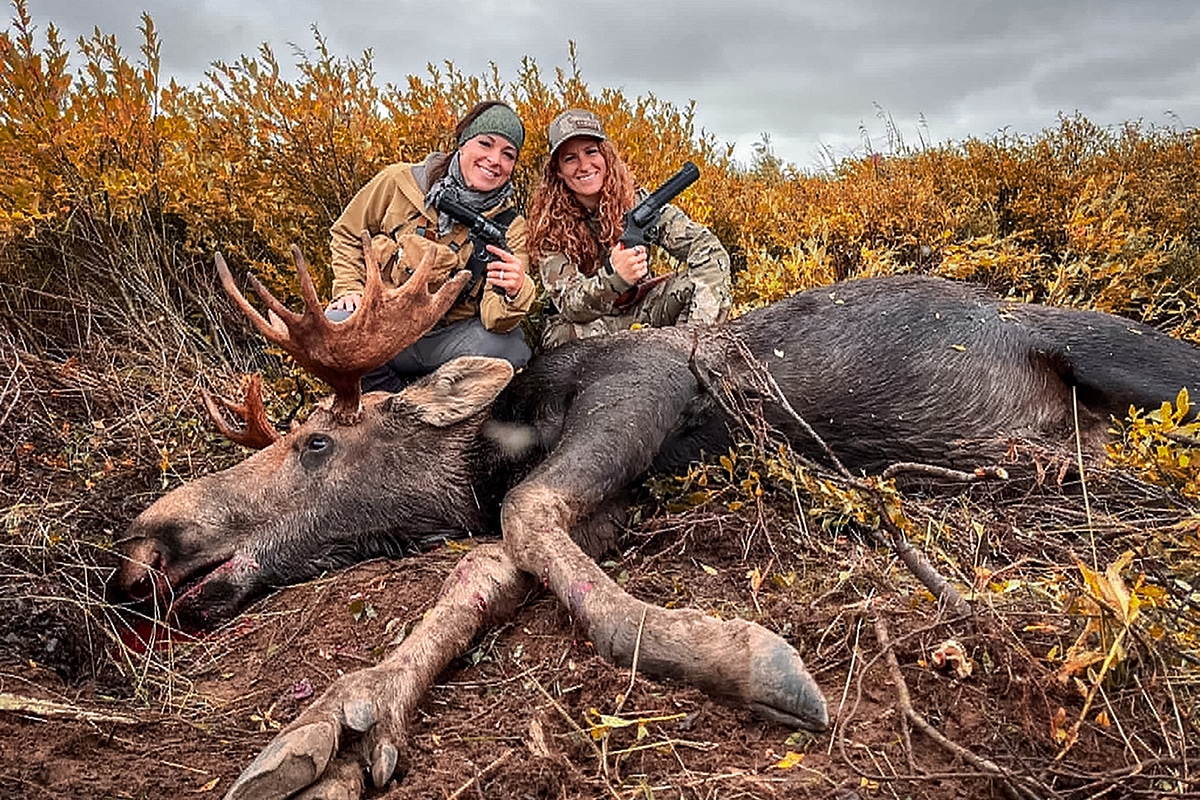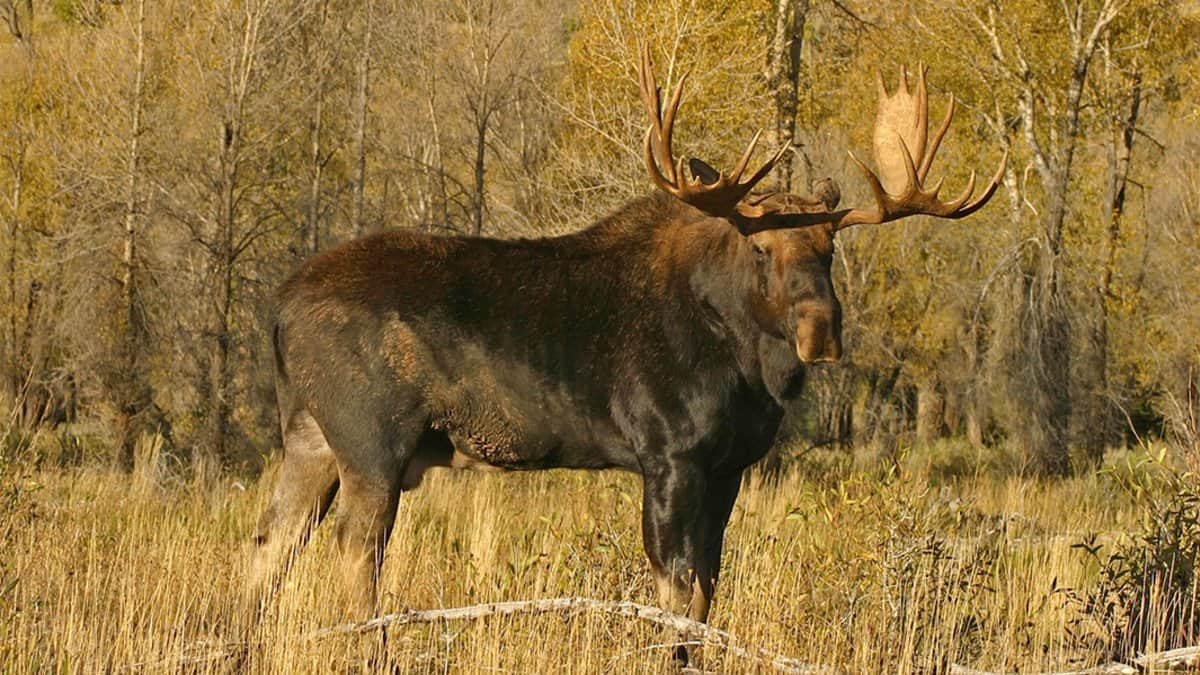To kill a moose, aim for a vital organ with a high-powered rifle. Ensure a quick, humane kill.
Hunting a moose requires skill and precision to effectively take down such a large and majestic animal. Proper knowledge of moose anatomy and behavior is crucial for a successful hunt. Additionally, using the right equipment, such as a high-powered rifle, is essential for a quick and humane kill.
Understanding the regulations and guidelines for hunting moose in your area is also important to ensure a legal and ethical hunt. In this guide, we will explore the best practices and techniques for effectively killing a moose while respecting nature and wildlife conservation efforts. Let’s delve into the world of moose hunting and learn how to make a clean and responsible kill.
Choosing The Right Equipment
Choosing the Right Equipment:
Selecting The Right Rifle
- Prioritize rifles with a minimum caliber of .30-06 for optimal moose hunting.
- Consider factors like weight, length, and recoil when selecting the rifle.
Choosing The Right Ammunition
- Opt for high-quality ammunition, such as bonded bullets or controlled expansion rounds.
- Ensure the ammunition is suitable for long-distance shooting and offers deep penetration.
Understanding Moose Behavior
Learning Their Habitat
A moose’s habitat includes dense forests, marshlands, and open meadows.
- Moose prefer areas with plenty of vegetation for feeding.
- They are commonly found near lakes and streams for drinking.
Identifying Signs Of Moose Presence
Signs such as large tracks, browsing marks on trees, and moose droppings indicate their presence.
- Look for hoof prints the size of a dinner plate.
- Browse marks on trees at about six feet high are a key indicator.
Mastering Tracking Techniques
Mastering tracking techniques is an essential skill for any aspiring moose hunter. Whether you’re a seasoned tracker or a novice in the art of hunting, developing and honing your tracking skills is crucial for a successful hunt. Effective tracking can lead to locating a moose with precision and increasing your chances of a successful kill. Understanding how to master tracking techniques, as well as utilizing the necessary tools, can make the difference between a frustrating hunt and a rewarding and successful experience.
Developing Tracking Skills
Developing tracking skills involves understanding the behavior of the moose and being able to interpret signs of their presence in their natural habitat. Observing and learning about the moose’s diet, behavior, and preferred terrain can give you valuable insights that will aid in tracking them effectively. Paying attention to tracks, droppings, and other signs of moose activity is essential for honing your tracking skills.
Utilizing Tracking Tools
Utilizing tracking tools can significantly enhance your ability to locate and track moose. Tools such as binoculars, trail cameras, and GPS devices can help you cover larger areas and gather valuable information about moose movements. Additionally, understanding how to use calls and scents can draw moose closer, making it easier to track and target them.

Credit: www.amazon.com
Perfecting The Art Of Stalking
When it comes to hunting moose, perfecting the art of stalking is crucial. This skill requires a combination of patience, stealth, and understanding of the moose’s behavior. With proper techniques and a keen eye, you can increase your chances of a successful hunt. Let’s delve into the subheading: Approaching Stealthily.
Approaching Stealthily
Approaching a moose stealthily is key to a successful hunt. These majestic creatures have acute senses and can detect even the slightest movement or noise. To avoid alerting the moose and scaring it away, here are a few tips:
- Move slowly and deliberately:
- Avoid stepping on twigs or crunchy leaves:
- Keep a low profile:
By following these tips, you can minimize your chances of being detected by the moose and get closer to your target. However, it’s not just about your movement – understanding wind direction plays a vital role as well.
Understanding Wind Direction
A moose relies heavily on its sense of smell to detect danger. If you’re upwind of the moose, your scent can easily give away your presence. To ensure you remain undetected, keep the following in mind:
- Predict the wind direction:
- Position yourself downwind:
- Use wind indicators:
By staying downwind of the moose and being aware of wind direction, you can prevent your scent from reaching them. This increases your chances of getting close enough for a clean shot.
Perfecting the art of stalking is essential for any aspiring moose hunter. Approaching stealthily and understanding wind direction are two vital aspects that can make or break your hunt. Remember to be patient, stay alert, and always prioritize safety. With practice, you’ll become a master of stalking, ensuring a successful and memorable moose hunting experience.
Executing A Clean Kill
In executing a clean kill when hunting moose, it is crucial to prioritize aiming for vital organs and adhere to ethical hunting practices. Not only does this ensure a humane harvest, but it also minimizes unnecessary suffering for the animal. In this section, we will delve into the importance of targeting vital organs and understanding ethical hunting practices to achieve a swift and clean kill while hunting moose.
Aiming For Vital Organs
When hunting a moose, it is essential to aim for vital organs to maximize the chance of a clean kill. The vital organs of a moose are primarily located within the chest cavity, including the heart and lungs. Taking aim at these organs not only ensures a quick and efficient kill but also minimizes the risk of injuring non-lethal areas, such as the limbs or stomach, which can lead to prolonged suffering.
Understanding Ethical Hunting Practices
To execute a clean kill while hunting a moose, one must follow ethical hunting practices. These practices promote both conservation and humane treatment of wildlife. Ethical hunters prioritize making clean and accurate shots, avoid taking risky shots that could lead to injured and unrecoverable game, and aim to harvest only what they need. By adhering to these principles, hunters help maintain a sustainable balance in the ecosystem and show respect for the animal being hunted.

Credit: freerangeamerican.us

Credit: www.bowhunter.com
Frequently Asked Questions On How To Kill A Moose
Can You Kill A Moose Without A License?
Yes, it is illegal to kill a moose without a hunting license. Moose hunting regulations vary by location, so it’s important to check with local authorities and obtain the necessary permits and licenses before hunting.
What Is The Best Way To Kill A Moose?
When hunting a moose, it is important to use the right equipment and tactics. The best way to kill a moose is to aim for the vital organs, such as the heart or lungs, with a high-powered rifle or bow.
It is also essential to ensure a clean and ethical kill by practicing accurate shot placement.
How Much Does It Cost To Hunt A Moose?
The cost of hunting a moose can vary depending on several factors including location, outfitter fees, licenses, and tags. In some areas, guided moose hunts can cost between $5,000 and $10,000 or more. It is important to budget for additional expenses such as transportation, accommodations, and trophy preparation as well.
Conclusion
Learning how to kill a moose requires skill, patience, and respect for nature. By following the legal and ethical guidelines, hunters can ensure a sustainable and safe hunt. It’s essential to prioritize safety for both people and the environment while embracing the traditions and values of responsible hunting practices.



